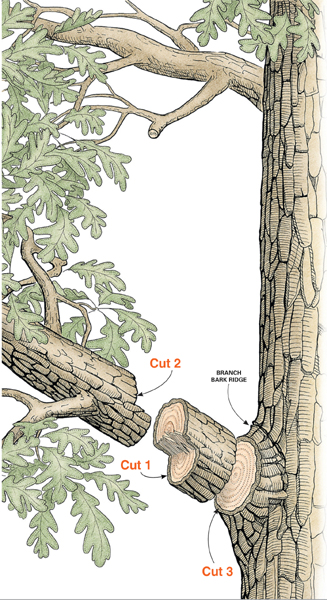
Scraggly, lopsided, overgrown trees and bushes are everywhere. And that’s a shame because keeping them attractive is so easy. For a typical yard, all it takes is a half-hour once or twice per year. Aside from looks, proper pruning also prevents disease and encourages flowering and better growth.
When you’re almost done cutting through a branch, the weight will snap the uncut portion of the branch, tear the bark and leave a jagged cut. That doesn’t just look bad; it also injures the tree and leaves it vulnerable to disease. But you can avoid that by first lopping off the branch 8 to 12 in. from the trunk (Cuts 1 and 2, below). That will unload the weight of the branch so your final cut (Cut 3) will be neat and clean.
Pruning is easy to put off. But with every year of delay, trees and shrubs become harder to prune. As branches get bigger, so does the task of trimming them. A job that would take 20 minutes now might consume an hour next year. You may also need bigger tools. Worse, neglected trees or bushes can become so hopeless that you’ll have to cut them down and start over.

A cut from below (Cut 1) limits tearing when the branch breaks off. Make the depth of that cut about one-third of the branch’s diameter. If you cut deeper, the weight of the branch will pinch and trap the blade. Then move over a couple inches and cut from the top (Cut 2).
The collar is the bulge where the branch meets the trunk. Leave it intact and it will soon grow over. If you cut it off, you’ll delay healing and seriously harm the tree. Don’t leave a stub of branch protruding from the collar. It will rot and possibly become diseased.
Dead, damaged or diseased branches are usually easy to spot. Cutting them off not only makes the tree or bush look better, but also discourages disease from starting or spreading. The fourth “D”—deranged branches—refers to branches that are crossing and rubbing on others, growing in a different direction or just awkward looking.
Voice of experience
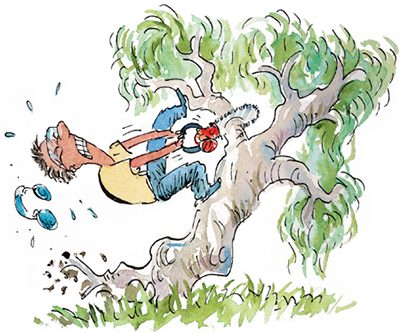
After 20 years in the tree-trimming business, I’ve trained dozens of novices. At some point, they all make two mistakes—despite my warnings. First, when cutting a branch from the side or below, they cut too deep. The downward weight of the branch pinches the blade and the saw is stuck. This can happen with any type of saw.
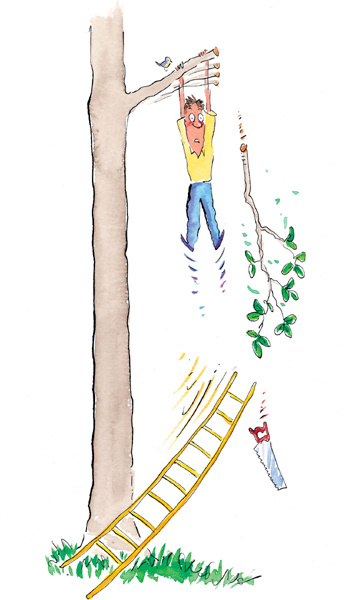
The second mistake is leaning a ladder against the branch they’re cutting. Cutting off the branch releases weight and the remaining portion springs up. Usually, this means two seconds of shrieking terror. But sometimes, the ladder and occupant come crashing down.
Al Morgan, The Family Handyman Field Editor
A saw mounted on a long pole lets you trim high branches from the safety of the ground. The most basic models are motorless; you provide the power. Others are mini chain saws powered by cords, batteries or gas engines.
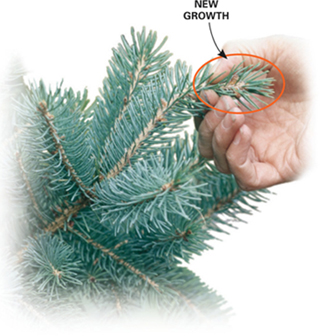
When an evergreen tree or shrub reaches the ideal height and shape, it may never again need major pruning. Instead, just pinch off the lighter-colored new growth each spring.
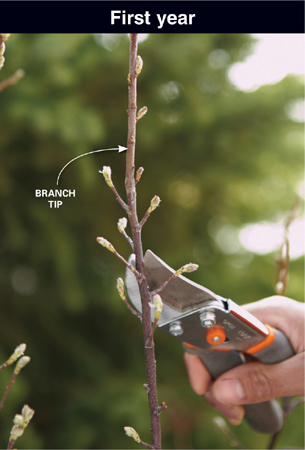
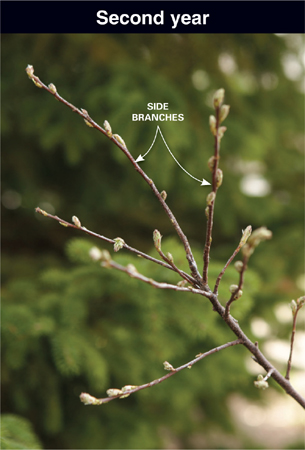
Bushes made up of many small branches—rather than a few larger ones—look fuller and more uniform. To encourage this, clip off main branches about 1/4 in. beyond a bud. Several smaller branches will soon radiate from near the cut, resulting in a denser bush.